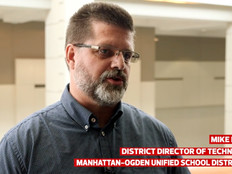Networking
CoSN2020: Improving Connectivity for K–12 Students
The homework gap is not a new issue. For many years, there's been a significant population of students who are unable to complete homework assignments because they don't have adequate access to devices or broadband internet outside of school.
But switching to remote learning has made that issue more pronounced. When the pandemic forced mandatory school closures nationwide, many school districts had to rush to make sure students — and even teachers — had both the devices and internet connectivity they needed to continue teaching and learning. And with the uncertainty around what next school year will look like, it's best for school leaders to prepare for potential connectivity challenges now.
At CoSN2020, Michael Flood, senior vice president of strategy at Kajeet, shared different methods schools are using to expand student connectivity. He also discussed how school leaders can navigate funding challenges and other best practices when deploying connectivity solutions next school year.
Be sure to check out the rest of our CoSN2020 coverage here.
Participants
Michael Flood, Senior Vice President, Strategy, Kajeet
Video Highlights
- Whether schools are fully reopening or moving to a hybrid model, school leaders must have a well-communicated contingency plan that fits in connectivity solutions and how they will be deployed.
- School leaders need to be mindful of budget cuts following the pandemic and think about "start, stop and continue" methodologies when making decisions about student connectivity.
- It's also important to ensure devices such as mobile hotspots are in compliance with the Children's Internet Protection Act.






